M2 Powder
$0.00
M2 Powder
| Product | M2 Powder |
| CAS No. | N/A |
| Appearance | Gray Powder |
| Purity | ≥99%, ≥99.9%, ≥95%(Other purities are also available) |
| APS | 1-5 µM, 10-53 µM (Can be customized), Ask for other available size range. |
| Ingredient | Fe-C-Cr-Mo-W-V |
| Density | N/A |
| Molecular Weight | N/A |
| Product Codes | NCZ-DCY-254/25 |
M2 Description:
M2 Powder is one of the numerous advanced ceramic materials manufactured by Nanochemazone. Nanochemazone produces too many standard grades when applicable, including Mil Spec (military grade); ACS, Reagent and Technical Grade; Food, Agricultural and Pharmaceutical Grade; Optical Grade, USP and EP/BP (European Pharmacopoeia/British Pharmacopoeia) and follows applicable ASTM testing standards. Typical and custom packaging is available. Additional technical, research and safety (MSDS) information are available. Please request a quote above for more information on lead time and pricing
M2 Powder Related Information :
Storage Conditions:
Airtight sealed, avoid light and keep dry at room temperature.
Please contact us for customization and price inquiry
Email: [email protected]
Note: We supply different size ranges of Nano and micron as per the client’s requirements and also accept customization in various parameters.
M2 Powder
M2 is a high-speed steel powder characterized by its high hardness and wear resistance along with good toughness and compressive strength. It is widely used in metal additive manufacturing to produce durable tooling for cutting, forming and stamping applications.
M2 is a high-speed steel powder characterized by its high hardness and wear resistance along with good toughness and compressive strength. It is widely used in metal additive manufacturing to produce durable tooling for cutting, forming and stamping applications.
Composition of M2 Powder
| Element | Weight % | Purpose |
| Tungsten | 6.0 – 6.8 | Hardness, wear resistance |
| Molybdenum | 4.8 – 5.5 | Toughness, strength |
| Chromium | 3.8 – 4.5 | Hardening, wear resistance |
| Vanadium | 1.9 – 2.2 | Hardening, wear resistance |
| Carbon | 0.78 – 0.88 | Hardening |
| Manganese | 0.15 – 0.45 | Hardening |
| Silicon | 0.15 – 0.45 | Deoxidizer |
The high tungsten, molybdenum and chromium content impart excellent hardness and wear resistance.
Properties of M2 Powder
| Property | Description |
| Hardness | 64 – 66 HRC when heat treated |
| Wear resistance | Excellent abrasion and erosion resistance |
| Toughness | Higher than tungsten carbide grades |
| Compressive strength | Up to 300 ksi |
| Heat resistance | Can be used up to 600°C |
| Corrosion resistance | Better than plain carbon steels |
The properties make M2 suitable for durable cutting, stamping and forming tooling.
AM Process Parameters for M2 Powder
| Parameter | Typical value | Purpose |
| Layer height | 20-50 μm | Resolution versus build speed |
| Laser power | 250-500 W | Sufficient melting without evaporation |
| Scan speed | 400-1200 mm/s | Density versus production rate |
| Hatch spacing | 80-120 μm | Mechanical properties |
| Support structure | Minimal | Easy removal |
| Hot isostatic pressing | 1160°C, 100 MPa, 3 hrs | Eliminate porosity |
Parameters tailored for density, microstructure, build rate and post-processing requirements.
Applications of 3D Printed M2 Tooling
| Industry | Tooling applications |
| Automotive | Stamping dies, forming tools, fixtures |
| Aerospace | Jigs, fixtures, trim tools |
| Appliances | Punches, blanking dies, bending dies |
| Consumer goods | Injection molds, stamping dies |
| Medical | Cutting tools, rasps, drill guides |
Benefits over traditionally processed M2 tooling include complexity, lead time and cost reduction.
Specifications of M2 Powder for AM
M2 powder must meet strict specifications:
| Parameter | Specification |
| Particle size range | 15-45 μm typical |
| Particle shape | Spherical morphology |
| Apparent density | > 4 g/cc |
| Tap density | > 6 g/cc |
| Hall flow rate | > 23 sec for 50 g |
| Purity | >99.9% |
| Oxygen content | <300 ppm |
Custom size distributions and controlled moisture levels available.
Handling and Storage of M2 Powder
As a reactive material, careful M2 powder handling is essential:
Store sealed containers away from moisture, sparks, ignition sources
Use inert gas padding during transfer and storage
Ground equipment to dissipate static charges
Avoid dust accumulation through extraction systems
Follow applicable safety precautions
Proper techniques ensure optimal powder condition.
Inspection and Testing of M2 Powder
| Method | Parameters Tested |
| Sieve analysis | Particle size distribution |
| SEM imaging | Particle morphology |
| EDX | Chemistry and composition |
| XRD | Phases present |
| Pycnometry | Density |
| Hall flow rate | Powder flowability |
Testing per ASTM standards verifies powder quality and batch consistency.
Comparing M2 to Alternative Tool Steel Powders
M2 compares to other tool steel alloys as:
| Alloy | Wear Resistance | Toughness | Cost | Ease of Processing |
| M2 | Excellent | Good | Medium | Fair |
| H13 | Good | Excellent | Low | Excellent |
| S7 | Excellent | Fair | High | Difficult |
| 420 stainless | Poor | Excellent | Low | Excellent |
With its balanced properties, M2 supersedes alternatives for many wear-resistant tooling applications.
Pros and Cons of M2 Powder for Metal AM
| Pros | Cons |
| Excellent hardness and wear resistance | Lower toughness than cold work tool steels |
| Good heat resistance and thermal stability | Required post-processing like HIP and heat treatment |
| Established credentials for metal AM | Controlled atmosphere storage required |
| Cost advantage over exotic tool steels | Difficult to machine after printing |
| Properties match conventional M2 | Limited corrosion resistance |
M2 enables high wear resistance additive tooling, though not suitable for highly corrosive environments.
Frequently Asked Questions about M2 Powder
Q: What particle size range works best for printing M2 powder?
A: A typical range is 15-45 microns. It provides optimal powder flowability combined with high resolution and dense parts.
Q: What post-processing methods are used for M2 AM parts?
A: Hot isostatic pressing, heat treatment, surface grinding/EDM, and shot peening are typically used to eliminate voids, harden, and finish parts.
Q: Which metal 3D printing process is ideal for M2 alloy?
A: M2 can be effectively printed using selective laser melting (SLM), direct metal laser sintering (DMLS) and electron beam melting (EBM) processes.
Q: What accuracy and surface finish can be expected for M2 printed parts?
A: Post-processed M2 components can achieve dimensional tolerances and surface finish comparable to CNC machined M2 tooling.
Q: What industries use additively manufactured M2 tooling components?
A: Automotive, aerospace, medical, consumer goods, appliances, and industrial sectors benefit from 3D printed M2 tooling.
Q: What is the key difference between M2 and M4 grades of high speed steel?
A: M4 has slightly lower vanadium and molybdenum content leading to a better combination of wear resistance and toughness compared to M2.
Q: Does M2 require support structures when 3D printing?
A: Minimal supports are recommended on overhangs and bridges to prevent deformation and allow easy removal after printing.
Q: What density can be expected with optimized M2 3D printed parts?
A: Density above 99% is achievable for M2 using ideal parameters tailored specifically for this alloy.
Q: What defects can occur when printing M2 powder?
A: Potential defects are cracking, distortion, porosity, incomplete fusion, and surface roughness. Most can be prevented through optimized parameters.
Q: Is HIP required for all M2 AM tooling components?
A: While highly recommended, HIP may not be absolutely necessary for non-critical tooling applications. Heat treatment alone may suffice.
Category: Iron Based Alloy Powder
Description
Description
Note: For pricing & ordering information, please get in touch with us at [email protected]
Please contact us for quotes on Larger Quantities and customization. E-mail: [email protected]
Customization:
If you are planning to order large quantities for your industrial and academic needs, please note that customization of parameters (such as size, length, purity, functionalities, etc.) is available upon request.
NOTE:
Images, pictures, colors, particle sizes, purity, packing, descriptions, and specifications for the real and actual goods may differ. These are only used on the website for the purposes of reference, advertising, and portrayal. Please contact us via email at [email protected] or by phone at (+1 780 612 4177) if you have any
Reviews (0)
Only logged in customers who have purchased this product may leave a review.
Shipping & Delivery
Related products
17-4PH Stainless Steel Powder
$0.00
17-4PH Stainless Steel Powder
| Product | 17-4PH Stainless Steel Powder |
| CAS No. | 7439-89-6 |
| Appearance | Grey Powder |
| Purity | ≥99%, ≥99.9%, ≥95%(Other purities are also available) |
| APS | 1-5 µM, 10-53 µM (Can be customized), Ask for other available size range. |
| Ingredient | Fe-Cr-Ni-Cu-Nb |
| Density | 7.75g/cm3 |
| Molecular Weight | N/A |
| Product Codes | NCZ-DCY-336/25 |
17-4PH Stainless Steel Description:
17-4PH Stainless Steel Powder is one of the numerous advanced ceramic materials manufactured by Nanochemazone. Nanochemazone produces too many standard grades when applicable, including Mil Spec (military grade); ACS, Reagent and Technical Grade; Food, Agricultural and Pharmaceutical Grade; Optical Grade, USP and EP/BP (European Pharmacopoeia/British Pharmacopoeia) and follows applicable ASTM testing standards. Typical and custom packaging is available. Additional technical, research and safety (MSDS) information are available. Please request a quote above for more information on lead time and pricing.17-4PH Stainless Steel Powder Related Information :
Storage Conditions: Airtight sealed, avoid light and keep dry at room temperature. Please contact us for customization and price inquiry Email: [email protected] Note: We supply different size ranges of Nano and micron as per the client’s requirements and also accept customization in various parameters. 17-4PH Stainless Steel Powder 17-4PH is a precipitation hardening stainless steel powder widely used in additive manufacturing across aerospace, medical, automotive, and general engineering sectors. It offers an excellent combination of high strength, good corrosion resistance, and weldability. Overview of 17-4PH Stainless Steel Powder 17-4PH is a precipitation hardening stainless steel powder widely used in additive manufacturing across aerospace, medical, automotive, and general engineering sectors. It offers an excellent combination of high strength, good corrosion resistance, and weldability. This article provides a detailed guide to 17-4PH powder covering composition, properties, AM process parameters, applications, specifications, suppliers, handling, inspection, comparisons, pros and cons, and FAQs. Key information is presented in easy-to-reference tables. Composition of 17-4PH Stainless Steel Powder The composition of 17-4PH powder is:| Element | Weight % | Purpose |
| Iron | Balance | Principal matrix element |
| Chromium | 15 – 17.5 | Oxidation resistance |
| Copper | 3 – 5 | Precipitation hardening |
| Nickel | 3 – 5 | Austenite stabilizer |
| Niobium | 0.15 – 0.45 | Carbide former |
| Manganese | 1 max | Deoxidizer |
| Silicon | 1 max | Deoxidizer |
| Carbon | 0.07 max | Strengthener and carbide former |
| Property | Description |
| High strength | Up to 1310 MPa tensile strength when aged |
| Hardness | Up to 40 HRC in aged condition |
| Corrosion resistance | Comparable to 316L stainless in many environments |
| Toughness | Superior to martensitic stainless steels |
| Wear resistance | Better than 300 series stainless steels |
| High temperature stability | Strength maintained up to 300°C |
| Parameter | Typical value | Purpose |
| Layer height | 20-100 μm | Balance speed and resolution |
| Laser power | 150-400 W | Sufficient melting without evaporation |
| Scan speed | 400-1000 mm/s | Density versus production rate |
| Hatch spacing | 100-200 μm | Density and mechanical properties |
| Support structure | Minimal | Easy removal |
| Hot isostatic pressing | 1120°C, 100 MPa, 3 hrs | Eliminate porosity |
| Industry | Applications |
| Aerospace | Structural brackets, fixtures, actuators |
| Medical | Dental implants, surgical instruments |
| Automotive | High strength fasteners, gears |
| Consumer products | Watch cases, sporting equipment |
| Industrial | End-use metal tooling, jigs, fixtures |
| Parameter | Specification |
| Particle size range | 15-45 μm typical |
| Particle shape | Spherical morphology |
| Apparent density | > 4 g/cc |
| Tap density | > 6 g/cc |
| Hall flow rate | > 23 sec for 50 g |
| Purity | >99.9% |
| Oxygen content | <100 ppm |
| Method | Parameters Tested |
| Sieve analysis | Particle size distribution |
| SEM imaging | Particle morphology |
| EDX | Chemistry and composition |
| XRD | Phases present |
| Pycnometry | Density |
| Hall flow rate | Powder flowability |
| Alloy | Strength | Corrosion Resistance | Cost | Printability |
| 17-4PH | Excellent | Good | Medium | Good |
| 316L | Medium | Excellent | Medium | Excellent |
| IN718 | Very High | Good | High | Fair |
| CoCrMo | Medium | Fair | Medium | Good |
| Pros | Cons |
| High strength-to-weight ratio | Lower oxidation resistance than austenitic stainless steels |
| Good combination of strength and corrosion resistance | Required post-processing like HIP and heat treatment |
| Lower cost than exotic alloys | Controlled atmosphere storage needed |
| Established credentials in AM | Difficult to weld and machine |
| Properties match wrought material | Susceptible to pitting and crevice corrosion |
18Ni300 Powder
$0.00
18Ni300 Powder
| Product | 18Ni300 Powder |
| CAS No. | 7440-02-0 |
| Appearance | Grey to Dark Grey Powder |
| Purity | ≥99%, ≥99.9%, ≥95%(Other purities are also available) |
| APS | 1-5 µM, 10-53 µM (Can be customized), Ask for other available size range. |
| Ingredient | 18Ni |
| Density | 8.0g/cm3 |
| Molecular Weight | N/A |
| Product Codes | NCZ-DCY-348/25 |
18Ni300 Description:
18Ni300 Powder is one of the numerous advanced ceramic materials manufactured by Nanochemazone. Nanochemazone produces too many standard grades when applicable, including Mil Spec (military grade); ACS, Reagent and Technical Grade; Food, Agricultural and Pharmaceutical Grade; Optical Grade, USP and EP/BP (European Pharmacopoeia/British Pharmacopoeia) and follows applicable ASTM testing standards. Typical and custom packaging is available. Additional technical, research and safety (MSDS) information are available. Please request a quote above for more information on lead time and pricing.18Ni300 Powder Related Information :
Storage Conditions: Airtight sealed, avoid light and keep dry at room temperature. Please contact us for customization and price inquiry Email: [email protected] Note: We supply different size ranges of Nano and micron as per the client’s requirements and also accept customization in various parameters. Properties and Characteristics of 18Ni300 Powder 18Ni300 powder boasts a unique combination of properties that make it a highly sought-after material for 3D printing applications. Here are some of its key characteristics:| Property | Description |
| High Strength and Toughness | Even after 3D printing, 18Ni300 parts exhibit exceptional strength and toughness, making them ideal for demanding applications. Imagine a 3D-printed gear that can withstand incredible pressure without breaking – that’s the power of 18Ni300. |
| Excellent Wear Resistance | This material stands up to wear and tear remarkably well. Think of a 3D-printed mold that retains its shape and function even after countless uses. |
| Low-Carbon Content | The low carbon content minimizes the risk of cracking during the 3D printing process, ensuring smooth and reliable production. |
| Good Weldability | 18Ni300 parts can be readily welded, allowing for the creation of complex structures or the joining of 3D-printed components with traditional manufacturing techniques. |
| High Dimensional Accuracy | The spherical shape and consistent particle size of 18Ni300 powder contribute to excellent dimensional accuracy in the final 3D-printed parts. |
| Industry | Application Examples |
| Aerospace | High-strength components for aircraft landing gear, rocket engine parts, and other critical structures. |
| Oil & Gas | Wear-resistant parts for downhole tools, valves, and other equipment exposed to harsh environments. |
| Automotive | High-performance gears, shafts, and other components for demanding applications. |
| Medical | Biocompatible implants and surgical instruments requiring exceptional strength and durability. |
| Defense | Armor components, weapon parts, and other applications where lightweight yet robust materials are essential. |
| Specification | Description |
| Particle Size | The size of the powder particles significantly impacts the final properties and printability of the 3D-printed part. Finer powders generally offer better surface finish and detail but may require specialized printing equipment. |
| Flowability | The powder’s ability to flow freely is essential for even distribution during the 3D printing process. Good flowability ensures consistent material deposition and minimizes printing defects. |
| Apparent Density | This refers to the weight of powder per unit volume. It’s a crucial factor for determining the amount of material needed for your print and optimizing printing parameters. |
| Grade | Different grades of 18Ni300 powder may offer variations in composition or properties to cater to specific application needs. For instance, some grades might prioritize higher strength, while others focus on improved machinability. |
304 Powder
$0.00
304 Powder
| Product | 304 Powder |
| CAS No. | 65997-19-5 |
| Appearance | Silver-Gray Powder |
| Purity | ≥99%, ≥99.9%, ≥95%(Other purities are also available) |
| APS | 1-5 µM, 10-53 µM (Can be customized), Ask for other available size range. |
| Ingredient | FeCr18Ni10 |
| Density | 7.9g/cm3 |
| Molecular Weight | N/A |
| Product Codes | NCZ-DCY-356/25 |
304 Description:
304 Powder is one of the numerous advanced ceramic materials manufactured by Nanochemazone. Nanochemazone produces too many standard grades when applicable, including Mil Spec (military grade); ACS, Reagent and Technical Grade; Food, Agricultural and Pharmaceutical Grade; Optical Grade, USP and EP/BP (European Pharmacopoeia/British Pharmacopoeia) and follows applicable ASTM testing standards. Typical and custom packaging is available. Additional technical, research and safety (MSDS) information are available. Please request a quote above for more information on lead time and pricing.304 Powder Related Information :
Storage Conditions: Airtight sealed, avoid light and keep dry at room temperature. Please contact us for customization and price inquiry Email: [email protected] Note: We supply different size ranges of Nano and micron as per the client’s requirements and also accept customization in various parameters. Stainless steel 304 Powder for 3D Printing 304 powder is a form of stainless steel powder that is widely used in various industries due to its exceptional properties. It is composed of iron, chromium, and nickel, which give it excellent corrosion resistance, high strength, and good formability. The powder form allows for easy processing and customization according to specific requirements. Introduction To 304 Powder 304 powder is a form of stainless steel powder that is widely used in various industries due to its exceptional properties. It is composed of iron, chromium, and nickel, which give it excellent corrosion resistance, high strength, and good formability. The powder form allows for easy processing and customization according to specific requirements. Composition And Properties 304 powder primarily consists of iron, with approximately 18% chromium and 8% nickel. These alloying elements contribute to its corrosion resistance and durability. Additionally, it contains small amounts of carbon, manganese, phosphorus, sulfur, and silicon. The combination of these elements results in a material with remarkable mechanical and chemical properties. Some key properties of 304 powder include: Corrosion resistance: 304 powder exhibits excellent resistance to corrosion from a wide range of substances, including water, acids, and alkalis. Strength and durability: It has high tensile strength, making it suitable for applications that require robust and long-lasting components. Formability: 304 powder can be easily formed into different shapes, allowing for versatility in manufacturing processes. Heat resistance: It maintains its strength and structural integrity even at elevated temperatures. Hygienic properties: Due to its non-porous surface, it is easy to clean and maintain sanitary conditions in applications such as food processing. Industrial Applications 304 powder finds extensive use in various industries. Let’s explore some of its prominent applications: Automotive Industry In the automotive sector, 304 powder is utilized in the manufacturing of exhaust systems, mufflers, and other components exposed to corrosive gases and liquids. Its resistance to oxidation and high-temperature environments makes it an ideal choice for these applications, ensuring longevity and reliability. Food Processing The food processing industry demands materials that meet stringent hygiene and corrosion resistance requirements. 304 powder is widely employed in food processing equipment, such as tanks, pipes, and fittings. Its smooth surface and resistance to food acids and chemicals make it a preferred choice, ensuring the integrity and safety of food products. Chemical Industry 304 powder is extensively used in the chemical industry due to its resistance to various corrosive substances. It is employed in the construction of reactors, storage tanks, and pipelines for handling chemicals and acids. The material’s ability to withstand corrosive environments and retain its structural integrity contributes to safe and efficient chemical processes. Architecture And Construction In architecture and construction, 304 powder finds applications in the fabrication of structural components, handrails, and decorative elements. Its aesthetic appeal, combined with corrosion resistance, makes it an excellent choice for both interior and exterior applications. Moreover, its formability allows for intricate designs and customization according to architectural requirements. Aerospace Sector The aerospace industry requires materials that can withstand extreme conditions, including high temperatures, vibrations, and corrosive environments. 304 powder is utilized in aircraft components, such as exhaust systems, brackets, and fasteners, due to its excellent combination of strength, heat resistance, and corrosion resistance. It plays a vital role in ensuring the safety and reliability of aerospace systems. Advantages Of Using 304 Powder 304 powder offers several advantages over other materials, making it a preferred choice in many industrial applications. Some notable benefits include: Corrosion resistance: The high chromium and nickel content provide exceptional resistance to corrosion, ensuring durability and longevity. Cost-effectiveness: 304 powder offers a cost-effective solution for various applications due to its availability and wide range of uses. Versatility: Its formability allows for customization and adaptability to different manufacturing processes and design requirements. Hygienic properties: The non-porous surface of 304 powder makes it easy to clean and maintain in industries with strict hygiene standards. Recyclability: Stainless steel, including 304 powder, is highly recyclable, contributing to environmental sustainability. Challenges And Limitations While 304 powder boasts numerous advantages, it also has some limitations to consider. These include: Moderate temperature limitations: While it exhibits good heat resistance, prolonged exposure to high temperatures may lead to a reduction in mechanical properties. Sensitivity to certain chemicals: 304 powder may be susceptible to specific corrosive substances, such as chlorides, under certain conditions. Proper material selection is crucial in such cases. Magnetic properties: Unlike some stainless steel alloys, 304 powder is generally magnetic, which may impact its suitability for certain applications. Best Practices For Handling And Storage To maximize the performance and longevity of 304 powder, it is important to follow best practices for its handling and storage. Consider the following guidelines: Store the powder in a clean, dry, and well-ventilated area to prevent moisture and contamination. Handle the powder with clean gloves to avoid transferring oils and other substances that may affect its properties. Keep the powder away from strong acids, alkalis, and chloride-containing substances to minimize the risk of corrosion. Regularly inspect the powder for any signs of damage or contamination before use. Future Trends And Innovations As technology advances and new industrial challenges emerge, the development of stainless steel powders like 304 powder continues. Researchers and manufacturers are exploring ways to further enhance its properties, expand its applications, and optimize its processing techniques. Future trends may include improved heat resistance, increased strength, and the development of eco-friendly manufacturing processes. Frequently Asked Questions (FAQs) Is 304 powder suitable for outdoor applications? Yes, 304 powder is commonly used in outdoor applications due to its corrosion resistance and durability. However, prolonged exposure to harsh environments may require additional protective measures. Can 304 powder be welded? Yes, 304 powder can be welded using common welding techniques. However, it is important to follow proper welding procedures to ensure optimal results and maintain its corrosion resistance. Can 304 powder be used for medical applications? While 304 powder is not typically used for direct medical implants, it is often employed in medical equipment and devices where corrosion resistance is required, such as surgical instruments and hospital equipment. How does 304 powder compare to other stainless steel alloys? 304 powder is one of the most commonly used stainless steel alloys due to its balanced combination of properties, cost-effectiveness, and availability. However, there are other alloys with specialized properties that may be more suitable for specific applications. Is 304 powder recyclable? Yes, stainless steel, including 304 powder, is highly recyclable. Recycling stainless steel helps conserve resources and reduce environmental impact.310 Powder
$0.00
310 Powder
| Product | 310 Powder |
| CAS No. | N/A |
| Appearance | Metallic Gray Powder |
| Purity | ≥99%, ≥99.9%, ≥95%(Other purities are also available) |
| APS | 1-5 µM, 10-53 µM (Can be customized), Ask for other available size range. |
| Ingredient | Fe-25Cr-20Ni |
| Density | 7.7-8.0g/cm3 |
| Molecular Weight | N/A |
| Product Codes | NCZ-DCY-338/25 |
310 Description:
310 Powder is one of the numerous advanced ceramic materials manufactured by Nanochemazone. Nanochemazone produces too many standard grades when applicable, including Mil Spec (military grade); ACS, Reagent and Technical Grade; Food, Agricultural and Pharmaceutical Grade; Optical Grade, USP and EP/BP (European Pharmacopoeia/British Pharmacopoeia) and follows applicable ASTM testing standards. Typical and custom packaging is available. Additional technical, research and safety (MSDS) information are available. Please request a quote above for more information on lead time and pricing.310 Powder Related Information :
Storage Conditions: Airtight sealed, avoid light and keep dry at room temperature. Please contact us for customization and price inquiry Email: [email protected] Note: We supply different size ranges of Nano and micron as per the client’s requirements and also accept customization in various parameters. 310 Powder 310 powder is an austenitic stainless steel powder containing high levels of chromium, nickel and nitrogen for enhanced mechanical properties and corrosion resistance. It offers an excellent combination of strength, hardness, toughness and wear resistance. Overview of 310 Powder 310 powder is an austenitic stainless steel powder containing high levels of chromium, nickel and nitrogen for enhanced mechanical properties and corrosion resistance. It offers an excellent combination of strength, hardness, toughness and wear resistance. Key properties and advantages of 310 powder include: 310 Powder Properties and Characteristics| Properties | Details |
| Composition | Fe-25Cr-20Ni-0.25N alloy |
| Density | 8.1 g/cc |
| Particle shape | Irregular, angular |
| Size range | 10-150 microns |
| Apparent density | Up to 50% of true density |
| Flowability | Moderate |
| Strength | Very high for a 300 series powder |
| Wear resistance | Excellent due to work hardening |
| Element | Weight % |
| Iron (Fe) | Balance |
| Chromium (Cr) | 24-26% |
| Nickel (Ni) | 19-22% |
| Nitrogen (N) | 0.2-0.4% |
| Carbon (C) | 0.25% max |
| Silicon (Si) | 1.5% max |
| Manganese (Mn) | 2% max |
| Sulfur (S) | 0.03% max |
| Phosphorus (P) | 0.045% max |
| Property | Values |
| Density | 8.1 g/cc |
| Melting point | 1370-1400°C |
| Electrical resistivity | 0.8 μΩ-m |
| Thermal conductivity | 12 W/mK |
| Thermal expansion | 11 x 10^-6 /K |
| Maximum service temperature | 1150°C |
| Property | Values |
| Tensile strength | 760-900 MPa |
| Yield strength | 450-550 MPa |
| Elongation | 35-40% |
| Hardness | 32-38 HRC |
| Impact strength | 50-100 J |
| Modulus of elasticity | 190-210 GPa |
| Industry | Example Uses |
| Petrochemical | Valves, pumps, shafts |
| Food processing | Extruder screws, blades |
| Automotive | Gears, shafts, fasteners |
| Manufacturing | Press tooling, bearing cages |
| Medical | Surgical instruments, implants |
| Standard | Description |
| ASTM A276 | Standard specification for stainless steel bars and shapes |
| ASTM A314 | Standard for stainless steel bent pipe and tubing |
| ASME SA-479 | Specification for stainless steel tubing |
| AMS 5517 | Annealed corrosion resistant steel bar, wire, forgings |
| AMS 5903 | Precipitation hardening stainless steel bar, wire, forgings |
| Particle Size | Characteristics |
| 10-45 microns | Ultrafine grade for high density and surface finish |
| 45-150 microns | Coarse grade provides good flowability |
| 15-150 microns | Standard grade for pressing and sintering |
| Apparent Density | Details |
| Up to 50% of true density | For irregular powder morphology |
| 4.5-5.5 g/cc typical | Improves with greater packing density |
| Method | Details |
| Gas atomization | High pressure inert gas breaks molten metal stream into fine droplets |
| Water atomization | High pressure water jet breaks metal into fine particles |
| Vacuum induction melting | High purity input materials melted under vacuum |
| Multiple remelting | Improves chemical homogenization |
| Sieving | Classifies powder into different particle size ranges |
| Recommendation | Reason |
| Use PPE and ventilation | Avoid exposure to fine metallic particles |
| Ensure proper grounding | Prevent static discharge while handling |
| Avoid ignition sources | Powder can combust in oxygen atmosphere |
| Use non-sparking tools | Prevent possibility of ignition |
| Follow safety protocols | Reduce risk of burns, inhalation, ingestion |
| Store in stable containers | Prevent contamination or oxidation |
| Test | Details |
| Chemical analysis | ICP and XRF verify composition |
| Particle size distribution | Laser diffraction determines size distribution |
| Apparent density | Hall flowmeter test per ASTM B212 standard |
| Powder morphology | SEM imaging shows particle shape |
| Flow rate analysis | Gravity flow rate through specified nozzle |
| Loss on ignition | Determines residual moisture content |
| Parameter | 310 | 316L |
| Density | 8.1 g/cc | 8.0 g/cc |
| Strength | 760-900 MPa | 485-550 MPa |
| Hardness | 32-38 HRC | 79-95 HRB |
| Corrosion resistance | Very good | Excellent |
| Cost | Low | High |
| Uses | Wear parts, tools | Chemical plants, marine |
430L Powder
$0.00
430L Powder
| Product | 430L Powder |
| CAS No. | 7439-89-6 |
| Appearance | Silvery-Gray Powder |
| Purity | ≥99%, ≥99.9%, ≥95%(Other purities are also available) |
| APS | 1-5 µM, 10-53 µM (Can be customized), Ask for other available size range. |
| Ingredient | Fe-16Cr |
| Density | 2.8g/cm3 |
| Molecular Weight | N/A |
| Product Codes | NCZ-DCY-343/25 |
430L Description:
430L Powder is one of the numerous advanced ceramic materials manufactured by Nanochemazone. Nanochemazone produces too many standard grades when applicable, including Mil Spec (military grade); ACS, Reagent and Technical Grade; Food, Agricultural and Pharmaceutical Grade; Optical Grade, USP and EP/BP (European Pharmacopoeia/British Pharmacopoeia) and follows applicable ASTM testing standards. Typical and custom packaging is available. Additional technical, research and safety (MSDS) information are available. Please request a quote above for more information on lead time and pricing.430L Powder Related Information :
Storage Conditions: Airtight sealed, avoid light and keep dry at room temperature. Please contact us for customization and price inquiry Email: [email protected] Note: We supply different size ranges of Nano and micron as per the client’s requirements and also accept customization in various parameters. 430L Powder 430L powder is a ferritic stainless steel powder containing 17% chromium with additions of molybdenum and niobium for enhanced corrosion resistance. It provides an optimal balance of corrosion resistance, strength, weldability and cost. Overview of 430L Powder 430L powder is a ferritic stainless steel powder containing 17% chromium with additions of molybdenum and niobium for enhanced corrosion resistance. It provides an optimal balance of corrosion resistance, strength, weldability and cost. Key properties and advantages of 430L powder: 430L Powder Properties and Characteristics| Properties | Details |
| Composition | Fe-17Cr-Nb-Mo alloy |
| Density | 7.7 g/cc |
| Particle shape | Irregular, angular |
| Size range | 10-150 microns |
| Apparent density | Up to 50% of true density |
| Flowability | Moderate |
| Corrosion resistance | Excellent in many environments |
| Strengthening | Solid solution and precipitation strengthening |
| Element | Weight % |
| Iron (Fe) | Balance |
| Chromium (Cr) | 16-18% |
| Carbon (C) | 0.12% max |
| Silicon (Si) | 1% max |
| Manganese (Mn) | 1% max |
| Molybdenum (Mo) | 0.5% max |
| Niobium (Nb) | 0.3-0.6% |
| Nitrogen (N) | 0.03% max |
| Sulfur (S) | 0.03% max |
| Property | Values |
| Density | 7.7 g/cc |
| Melting point | 1400-1450°C |
| Electrical resistivity | 0.6-0.7 μΩ-m |
| Thermal conductivity | 26 W/mK |
| Curie temperature | 1440°C |
| Maximum service temperature | 650-750°C |
| Industry | Example Uses |
| Chemical | Tanks, valves, pipes, pumps |
| Automotive | Exhaust components, fuel injection parts |
| Construction | Cladding, architectural features |
| Oil and gas | Wellhead equipment, drilling tools |
| Manufacturing | Pressing tooling, molds, dies |
| Standard | Description |
| ASTM A743 | Standard for corrosion resistant chromium steel castings |
| ASTM A744 | Standard for corrosion resistant chromium steel sheet and strip |
| AMS 5759 | Annealed corrosion resistant steel bar, wire, forgings |
| SAE J405 | Automotive weathering steel sheet |
| DIN 17440 | Stainless steels for corrosion resistant applications |
| Particle Size | Characteristics |
| 10-45 microns | Ultrafine grade for high density and surface finish |
| 45-150 microns | Coarse grade provides good flowability |
| 15-150 microns | Standard grade for pressing and sintering |
| Apparent Density | Details |
| Up to 50% of true density | For irregular powder morphology |
| 3.5-4.5 g/cc typical | Improves with greater packing density |
| Method | Details |
| Gas atomization | High pressure inert gas breaks molten metal stream into fine droplets |
| Water atomization | High pressure water jet breaks metal into fine particles |
| Vacuum induction melting | High purity input materials melted under vacuum |
| Multiple remelting | Improves chemical homogenization |
| Sieving | Classifies powder into different particle size ranges |
| Recommendation | Reason |
| Use PPE and ventilation | Avoid exposure to fine metallic particles |
| Ensure proper grounding | Prevent static discharge while handling |
| Avoid ignition sources | Powder can combust in oxygen atmosphere |
| Use non-sparking tools | Prevent possibility of ignition during handling |
| Follow safety protocols | Reduce risk of burns, inhalation, and ingestion |
| Store in stable containers | Prevent contamination or oxidation |
| Test | Details |
| Chemical analysis | ICP and XRF verify composition |
| Particle size distribution | Laser diffraction determines size distribution |
| Apparent density | Hall flowmeter test per ASTM B212 standard |
| Powder morphology | SEM imaging shows particle shape |
| Flow rate analysis | Gravity flow rate through specified nozzle |
| Loss on ignition | Determines residual moisture content |
| Parameter | 430L | 304L |
| Density | 7.7 g/cc | 8.0 g/cc |
| Strength | 450-650 MPa | 520-620 MPa |
| Corrosion resistance | Excellent | Outstanding |
| Heat resistance | Good | Excellent |
| Weldability | Good | Excellent |
| Cost | Low | High |
| Uses | Automotive, construction | Chemical processing, marine |
H13 Alloy Steel Powder
$0.00
H13 Alloy Steel Powder
| Product | H13 Alloy Steel Powder |
| CAS No. | N/A |
| Appearance | Gray to Dark Gray Powder |
| Purity | ≥99%, ≥99.9%, ≥95%(Other purities are also available) |
| APS | 1-5 µM, 10-53 µM (Can be customized), Ask for other available size range. |
| Ingredient | Fe-Cr-Mo-V-C |
| Density | 7.80g/cm3 |
| Molecular Weight | N/A |
| Product Codes | NCZ-DCY-351/25 |
H13 Alloy Steel Description:
H13 Alloy Steel Powder is one of the numerous advanced ceramic materials manufactured by Nanochemazone. Nanochemazone produces too many standard grades when applicable, including Mil Spec (military grade); ACS, Reagent and Technical Grade; Food, Agricultural and Pharmaceutical Grade; Optical Grade, USP and EP/BP (European Pharmacopoeia/British Pharmacopoeia) and follows applicable ASTM testing standards. Typical and custom packaging is available. Additional technical, research and safety (MSDS) information are available. Please request a quote above for more information on lead time and pricing.H13 Alloy Steel Powder Related Information :
Storage Conditions: Airtight sealed, avoid light and keep dry at room temperature. Please contact us for customization and price inquiry Email: [email protected] Note: We supply different size ranges of Nano and micron as per the client’s requirements and also accept customization in various parameters. H13 Alloy Steel Powder For 3D Printing Our nitrogen atomized H13 alloy steel powder has good hardenability, thermal strength, wear resistance and high impact toughness, thermal fatigue, widely used in the manufacture of hot work molds.Wear is one of the main failure modes of H13 steel hot-working die. Improving the surface wear resistance of H13 steel is an effective way to improve the life of die. H13 alloy steel powder is a highly versatile and widely used material in various industrial applications, particularly in the field of metal additive manufacturing (AM). This chromium-molybdenum hot-work tool steel is renowned for its exceptional properties, such as high hardness, excellent wear resistance, and good toughness, even at elevated temperatures.| Composition | Content (%) |
| Carbon | 0.32 – 0.45 |
| Chromium | 4.75 – 5.50 |
| Molybdenum | 1.10 – 1.75 |
| Vanadium | 0.80 – 1.20 |
| Silicon | 0.80 – 1.20 |
| Manganese | 0.20 – 0.50 |
| Iron | Balance |
| Property | Value |
| Density | 7.8 g/cm³ |
| Hardness (Annealed) | 185 – 235 HB |
| Hardness (Heat Treated) | 48 – 52 HRC |
| Tensile Strength (Heat Treated) | 1800 – 2100 MPa |
| Yield Strength (Heat Treated) | 1500 – 1800 MPa |
| Elongation (Heat Treated) | 10 – 15% |
| Thermal Conductivity | 28.6 W/m·K at 20°C |
| Melting Point | 1427 – 1510°C |
| Application | Description |
| Extrusion Dies | Used for hot extrusion of metals, plastics, and other materials |
| Forging Dies | Utilized in hot forging processes for various metal components |
| Injection Molds | Employed in plastic injection molding for manufacturing plastic parts |
| Hot Shear Blades | Used in hot shearing operations for cutting metals at elevated temperatures |
| Casting Tooling | Utilized in the production of castings for various industries |
| Powder Metallurgy Tooling | Employed in the manufacturing of powder metallurgy components |
| Additive Manufacturing (AM) Components | Used for producing high-performance components via metal 3D printing techniques |
| Specification | Description |
| ASTM A681 | Standard specification for tool steels alloy |
| DIN 1.2344 | German standard for hot-work tool steel |
| JIS SKD61 | Japanese Industrial Standard for hot-work die steel |
| BS BH13 | British Standard for hot-working die steel |
| AISI H13 | American Iron and Steel Institute specification for hot-work die steel |
S2 Powder
$0.00
S2 Powder
S2 powder produces cutting tools, dies, and machine components with extended service life under continuous high temperature and intermittent shock loading conditions.
S2 Powder Composition
Iron provides the ferritic matrix
Carbon, tungsten, and chromium form hard carbides
Vanadium and molybdenum enhance wear resistance
Manganese and silicon facilitate machining
S2 Powder Physical Properties
High density enables miniaturized components
Retains hardness and strength at elevated temperatures
Becomes paramagnetic above Curie point
Can withstand prolonged service up to 600°C
Good thermal conductivity reduces thermal expansion stresses
These properties provide a balanced combination of hot hardness and thermal shock resistance required in high speed machining applications.
S2 Powder Mechanical Properties
Exceptional hardness when heat treated
High strength with reasonable ductility
Very good compressive and transverse rupture strength
Excellent red hardness at elevated temperatures
Strength depends on heat treatment process
S2 powder produces cutting tools and dies with hardness, strength, and thermal properties needed to machine challenging materials at high speeds and temperatures.
S2 Powder Applications
Some specific product uses:
Cutting inserts, indexable tooling
Broaches, reamers, taps, threading dies
Metal slitting saws and industrial knives
Extrusion tooling and drawing dies
Cold heading and forging dies
Gauges, wear-resistant components
S2’s unique properties make it the top choice for reliable cutting tools and components used in demanding metalworking applications.
S2 Powder Specifications
Key specifications for S2 high speed steel powder:
S2 Powder Standards
These define:
Chemical composition limits of S2
Required mechanical properties in heat treated condition
Approved production methods like gas atomization
Compliance testing protocols
Quality assurance requirements
Proper packaging and identification
Powder produced to these standards ensures suitability for high wear resistance tooling applications under thermal fatigue conditions.
S2 Powder Particle Sizes
Finer particles allow greater densification during sintering
Coarser particles improve powder flow into die cavities
Size is selected based on final part properties needed
Both gas and water atomized particles used
Controlling size distribution optimizes pressing behavior, sintered density, and final component performance.
S2 Powder Apparent Density
Spherical powder shape provides high apparent density
Irregular powder has lower density around 45-50%
Higher apparent density improves die filling and part quality
Allows complex tool geometry compaction
Higher apparent density leads to better component production rate and performance.
S2 Powder Production
Gas atomization provides spherical powder shape
Vacuum melting eliminates gaseous impurities
Multiple remelting improves uniformity
Post-processing allows particle size customization
Fully automated processes combined with strict quality control ensures reliable and consistent S2 powder properties critical for tooling performance.
S2 Powder Handling and Storage
Storage Recommendations
Store sealed containers away from moisture or contamination
Maintain storage temperatures below 27°C
Limit exposure to oxidizing acids and chlorine compounds
Proper precautions during handling and storage help preserve purity and prevent safety hazards.
S2 Powder Testing
Testing ensures the powder meets the required chemical composition, physical characteristics, particle size distribution, morphology, density, and flow rate specifications.
S2 Powder Pros and Cons
Advantages of S2 Powder
Exceptional hot hardness and red hardness
High strength and wear resistance at elevated temperatures
Good toughness and thermal shock resistance
Resists softening and shape changes up to 600°C
Dimensional stability under thermal cycling
Cost-effective compared to exotic PM tool steel grades
Limitations of S2 Powder
Moderate corrosion resistance without surface treatment
Limited cold formability and shear strength
Requires careful heat treatment by experienced providers
Not weldable using conventional fusion welding
Large cross-sections can experience embrittlement
Contains expensive alloying elements
Comparison With H13 Tool Steel Powder
S2 vs H13 Tool Steel Powder
S2 has much greater hot hardness and thermal shock resistance
H13 provides better cold strength and toughness
S2 is more expensive due to higher alloy content
S2 preferred for high speed machining applications
H13 suited for cold and warm pressing tooling
S2 Powder FAQs
Q: What are the main applications of S2 tool steel powder?
A: Main applications include cutting tools like drills, mills, inserts, taps, dies, saws, planning tools, as well as extrusion tooling, forging dies, gauges, and components needing hot hardness and thermal shock resistance.
Q: What heat treatment is used for S2 tool steel powder?
A: S2 tool steel is typically heat treated by austenitizing between 1150-1200°C followed by air, oil, or polymer quenching, then tempering between 540-650°C to achieve hardness between 62-64 HRC.
Q: How does tungsten improve the properties of S2 steel?
A: Tungsten forms hard tungsten-iron-carbon complexes that provide exceptional hot hardness, strength and wear resistance at elevated temperatures needed for high speed machining applications.
Q: What safety precautions should be used when working with S2 powder?
A: Proper ventilation, protective gear, inert atmosphere, grounding, avoiding ignition sources, using non-sparking tools, and safe storage away from contamination or moisture.
| Product | S2 Powder |
| CAS No. | 77404-34-9 |
| Appearance | Metallic Powder |
| Purity | ≥99%, ≥99.9%, ≥95%(Other purities are also available) |
| APS | 1-5 µM, 10-53 µM (Can be customized), Ask for other available size range. |
| Ingredient | S-2 |
| Density | 7.8-8.1g/cm3 |
| Molecular Weight | N/A |
| Product Codes | NCZ-DCY-355/25 |
S2 Description:
M2 Powder is one of the numerous advanced ceramic materials manufactured by Nanochemazone. Nanochemazone produces too many standard grades when applicable, including Mil Spec (military grade); ACS, Reagent and Technical Grade; Food, Agricultural and Pharmaceutical Grade; Optical Grade, USP and EP/BP (European Pharmacopoeia/British Pharmacopoeia) and follows applicable ASTM testing standards. Typical and custom packaging is available. Additional technical, research and safety (MSDS) information are available. Please request a quote above for more information on lead time and pricing.S2 Powder Related Information :
Storage Conditions: Airtight sealed, avoid light and keep dry at room temperature. Please contact us for customization and price inquiry Email: [email protected] Note: We supply different size ranges of Nano and micron as per the client’s requirements and also accept customization in various parameters. S2 Powder S2 powder is a high speed tool steel powder ideal for making cutting tools requiring high hardness, strength, and wear resistance at elevated temperatures. It contains tungsten, molybdenum, vanadium, and additional alloys providing excellent hot hardness and thermal fatigue resistance. Overview of S2 Powder S2 powder is a high speed tool steel powder ideal for making cutting tools requiring high hardness, strength, and wear resistance at elevated temperatures. It contains tungsten, molybdenum, vanadium, and additional alloys providing excellent hot hardness and thermal fatigue resistance. Key properties and advantages of S2 powder: S2 Powder Properties and Characteristics| Properties | Details |
| Composition | Fe-1C-5Cr-2.35Mo-6.4W-1.4V-2Si alloy |
| Density | 7.7 g/cc |
| Particle shape | Irregular, angular |
| Size range | 10-150 microns |
| Apparent density | Up to 50% of true density |
| Flowability | Low to moderate |
| Hardness | 62-64 HRC when heat treated |
| Toughness | Very good |
| Element | Weight % |
| Iron (Fe) | Balance |
| Carbon (C) | 0.9-1.2% |
| Chromium (Cr) | 3.8-4.5% |
| Tungsten (W) | 6.4% |
| Molybdenum (Mo) | 1.9-2.2% |
| Vanadium (V) | 1.3-1.6% |
| Manganese (Mn) | 0.2-0.5% |
| Silicon (Si) | 0.9-1.4% |
| Property | Values |
| Density | 7.7 g/cc |
| Melting point | 1320-1350°C |
| Thermal conductivity | 37 W/mK |
| Electrical resistivity | 0.6 μΩ-m |
| Maximum service temperature | 600°C |
| Curie temperature | 770°C |
| Property | Values |
| Hardness | 62-64 HRC |
| Transverse rupture strength | 4500-4800 MPa |
| Compressive strength | 3800-4100 MPa |
| Tensile strength | 2050-2250 MPa |
| Yield strength | 1930-2050 MPa |
| Elongation | 8-10% |
| Impact toughness | 10-14 J/cm2 |
| Industry | Example Uses |
| Automotive | Cutting and milling tools |
| Aerospace | Drills, end mills |
| Manufacturing | Punches, forming dies |
| Oil and gas | Downhole tools, drill bits |
| General machining | Turning, boring, and planning tools |
| Standard | Description |
| ASTM A600 | Specification for tool steels high speed steel |
| JIS G4403 | High speed tool steels |
| DIN 1.2363 | Equivalent to AISI S7 high speed steel |
| UNS T11302 | Designation for AISI S2 grade |
| ISO 4957 | Tool steels specification |
| Particle Size | Characteristics |
| 10-22 microns | Ultrafine grade provides highest density |
| 22-53 microns | Most commonly used size range |
| 53-105 microns | Coarser size provides good flowability |
| Apparent Density | Details |
| Up to 50% of true density | For irregular powder morphology |
| 4.0-5.0 g/cc | Higher for spherical, lower for irregular powder |
| Method | Details |
| Gas atomization | High pressure inert gas breaks up molten alloy stream into fine droplets |
| Vacuum induction melting | High purity input materials melted under vacuum |
| Multiple remelting | Enhances chemical homogeneity |
| Sieving | Classifies powder into different particle size fractions |
| Recommendation | Reason |
| Ensure proper ventilation | Prevent exposure to fine metal particles |
| Use appropriate PPE | Avoid ingestion through nose/mouth |
| Ground equipment | Prevent static sparking |
| Avoid ignition sources | Flammable dust hazard |
| Use non-sparking tools | Prevent possibility of ignition |
| Follow safe protocols | Reduce fire, explosion, health risks |
| Test | Details |
| Chemical analysis | Verifies composition using optical/ICP spectroscopy |
| Particle size analysis | Determines size distribution using laser diffraction or sieving |
| Apparent density | Measured as per ASTM B212 using Hall flowmeter |
| Powder morphology | SEM imaging to determine particle shape |
| Flow rate test | Gravity flow rate through specified funnel |
| Tap density test | Density measured after mechanically tapping powder sample |
| Parameter | S2 | H13 |
| Hardness | 62-64 HRC | 54-57 HRC |
| Hot hardness | Excellent | Good |
| Toughness | Very good | Good |
| Thermal shock resistance | Excellent | Moderate |
| Cold strength | Good | Excellent |
| Cost | High | Low |
T15 Powder
$0.00
T15 Powder
| Product | T15 Powder |
| CAS No. | 14807-96-6 |
| Appearance | Grayish or Metallic Powder |
| Purity | ≥99%, ≥99.9%, ≥95%(Other purities are also available) |
| APS | 1-5 µM, 10-53 µM (Can be customized), Ask for other available size range. |
| Ingredient | WC-Co |
| Density | 8.0-8.2g/cm3 |
| Molecular Weight | N/A |
| Product Codes | NCZ-DCY-358/25 |
T15 Description:
T15 Powder is one of the numerous advanced ceramic materials manufactured by Nanochemazone. Nanochemazone produces too many standard grades when applicable, including Mil Spec (military grade); ACS, Reagent and Technical Grade; Food, Agricultural and Pharmaceutical Grade; Optical Grade, USP and EP/BP (European Pharmacopoeia/British Pharmacopoeia) and follows applicable ASTM testing standards. Typical and custom packaging is available. Additional technical, research and safety (MSDS) information are available. Please request a quote above for more information on lead time and pricing.T15 Powder Related Information :
Storage Conditions: Airtight sealed, avoid light and keep dry at room temperature. Please contact us for customization and price inquiry Email: [email protected] Note: We supply different size ranges of Nano and micron as per the client’s requirements and also accept customization in various parameters. T15 Powder T15 powder is a tungsten carbide-cobalt cemented carbide powder that provides an exceptional combination of hardness, strength, and toughness. It contains a high percentage of tungsten carbide along with 15% cobalt as the binder phase. Overview of T15 Powder T15 powder is a tungsten carbide-cobalt cemented carbide powder that provides an exceptional combination of hardness, strength, and toughness. It contains a high percentage of tungsten carbide along with 15% cobalt as the binder phase. Key properties and advantages of T15 powder: T15 Powder Properties and Characteristics| Properties | Details |
| Composition | 85% WC with 15% Co binder |
| Density | 13.0-14.5 g/cc |
| Particle shape | Rounded, multi-faceted |
| Size range | 0.5-15 microns |
| Hardness | 88-93 HRA when sintered |
| Transverse rupture strength | 550-650 MPa |
| Component | Weight % |
| Tungsten carbide (WC) | 84-86% |
| Cobalt (Co) | 14-16% |
| Carbon (C) | 0.8% max |
| Oxygen (O) | 0.5% max |
| Iron (Fe) | 0.3% max |
| Nickel (Ni) | 0.3% max |
| Property | Values |
| Density | 13.0-14.5 g/cc |
| Melting point | 2870°C (WC) and 1495°C (Co) |
| Thermal conductivity | 60-100 W/mK |
| Electrical resistivity | 25-35 μΩ-cm |
| Coefficient of thermal expansion | 4.5-6.0 x 10^-6 /K |
| Maximum service temperature | 500°C in air |
| Property | Values |
| Hardness | 88-93 HRA |
| Transverse rupture strength | 550-650 MPa |
| Compressive strength | 5500-6200 MPa |
| Fracture toughness | 10-12 MPa.m^1/2 |
| Young’s modulus | 550-650 GPa |
| Impact strength | 350-900 kJ/m2 |
| Industry | Example Uses |
| Mining | Rock drill bits, grit blasting nozzles |
| Construction | Demolition tools, rock crushers |
| Manufacturing | Forming dies, metal drawing parts |
| Oil and gas | Stabilizers, downhole motors |
| General | Cutting and machining tools |
| Standard | Description |
| ISO 513 | Classification and application of cemented carbides |
| ASTM B276 | Cobalt-tungsten carbide powders and hard metals |
| JIS G 4053 | Sintered hard metals |
| GB/T 4661-2006 | Chinese standard for cemented carbides |
| Particle Size | Characteristics |
| 0.5-2 microns | Ultrafine grade provides superfinish |
| 0.5-5 microns | Submicron range enhances toughness |
| 3-15 microns | Most commonly used size for optimal properties |
| Method | Details |
| Carburization and reduction-diffusion | Produces fine spherical powders |
| Crushing sintered material | Lower cost, irregular angular particles |
| Milling | Ball milling used for particle size reduction |
| Spray drying | Granulation and spheroidization process |
| Degassing | Removes gaseous impurities |
| Recommendation | Reason |
| Use PPE and ventilation | Prevent exposure to fine particles |
| Avoid ignition sources | Powder can combust if overheated in air |
| Follow safe protocols | Reduce health and fire hazards |
| Use inert atmosphere | Prevent oxidation during powder processing |
| Store sealed containers | Prevent contamination or absorption |
| Test | Details |
| Chemical analysis | Verifies composition using ICP, EDX, or XRF |
| Particle size distribution | Laser diffraction or sedimentation analysis |
| Powder morphology | SEM imaging of particle shape |
| Apparent density | Measured as per ASTM B212 standard |
| Tap density | Density measured after mechanical tapping |
| Hall flow rate | Determines powder flowability |
| Parameter | T15 | WC-TiC-TaC |
| Hardness | 88-93 HRA | 92-96 HRA |
| Fracture toughness | 10-12 MPa.m^1/2 | 8-9 MPa.m^1/2 |
| Strength | Very high | Extremely high |
| Cost | Moderate | Very high |
| Corrosion resistance | Fair | Excellent |
| Applications | General wear parts | Extreme abrasion and corrosion |

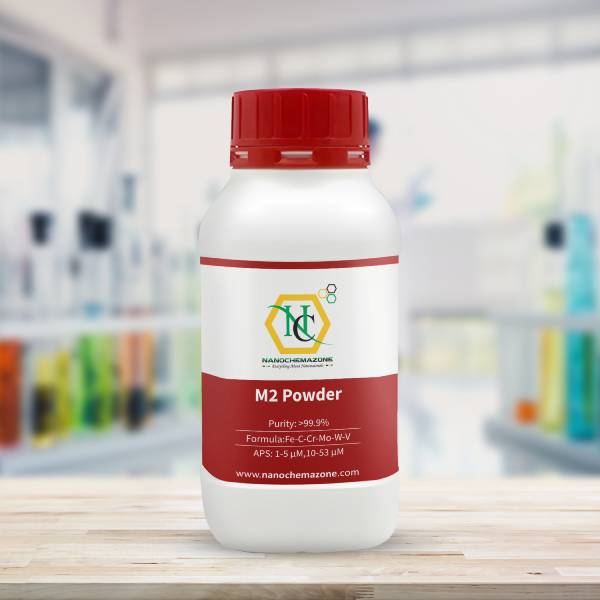
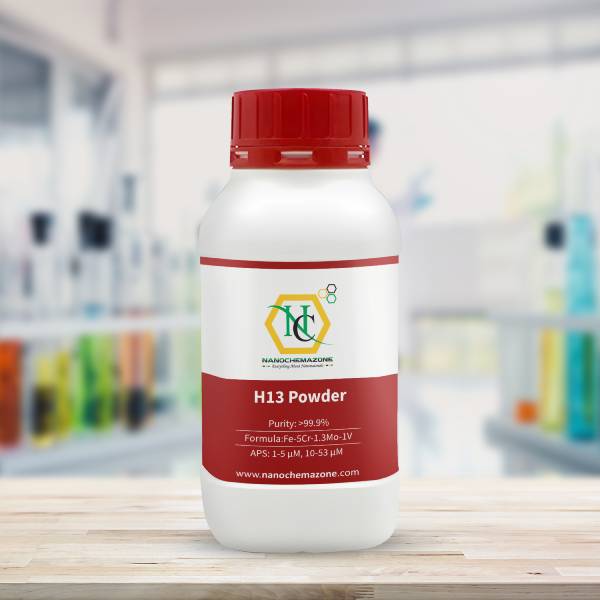
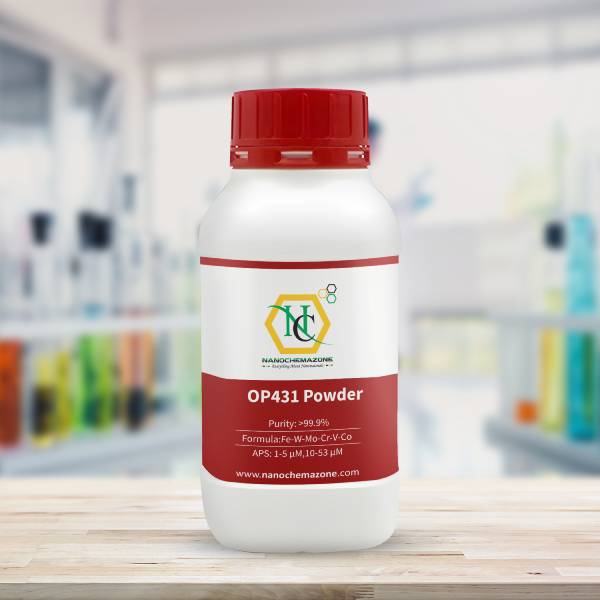
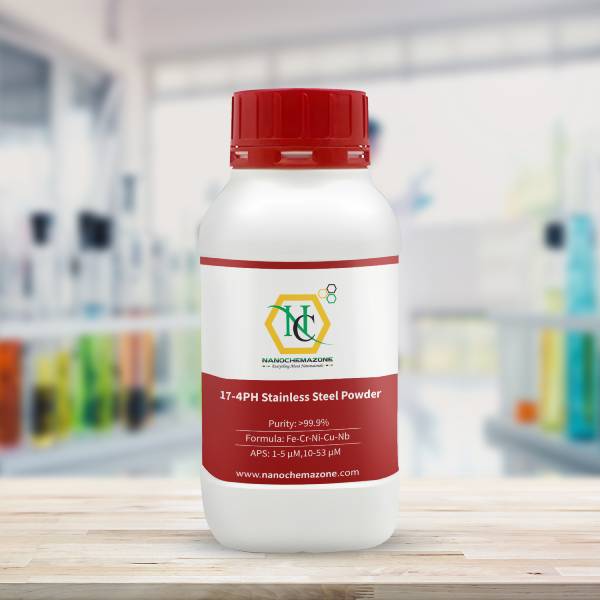
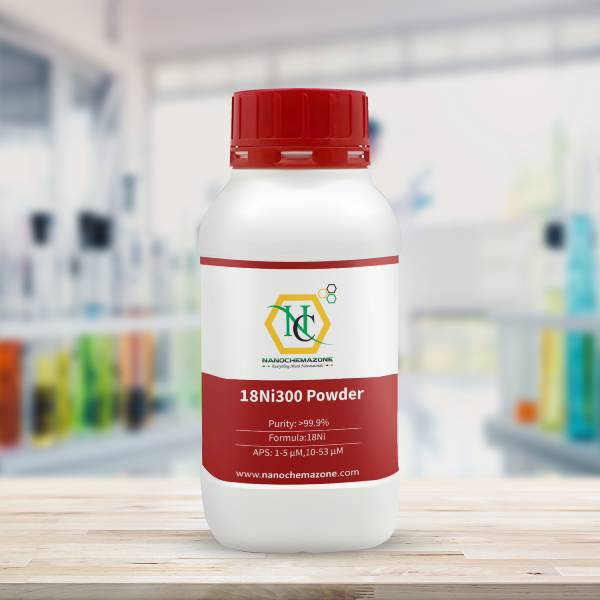
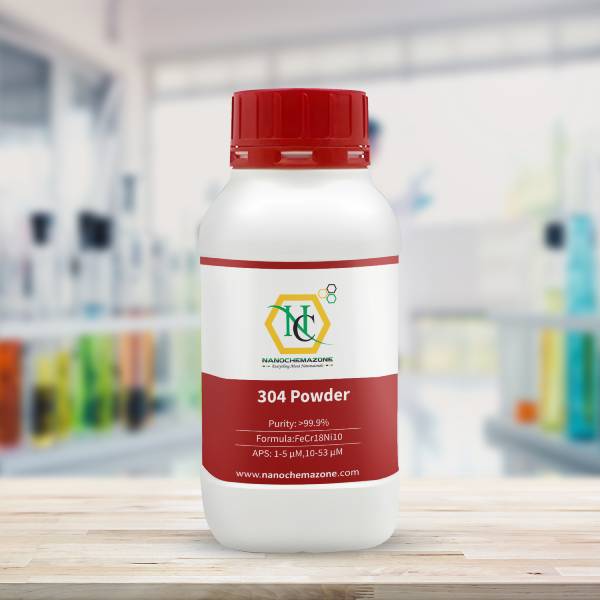
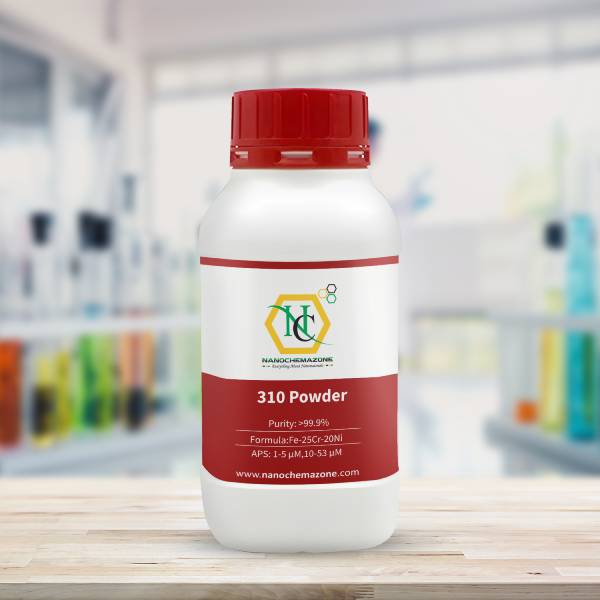
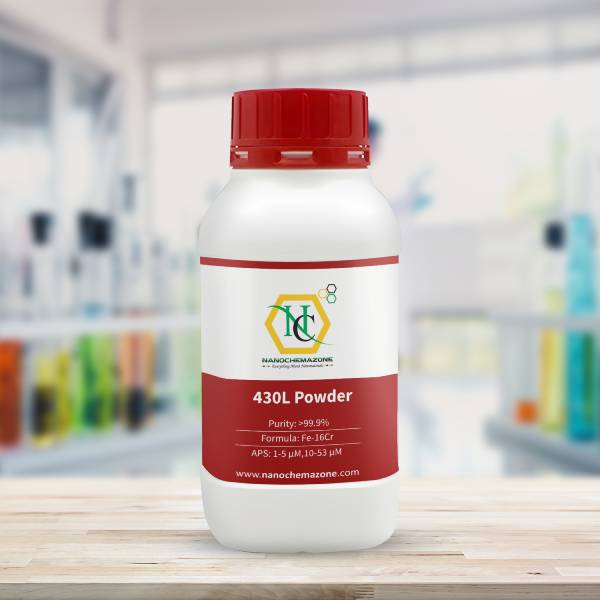
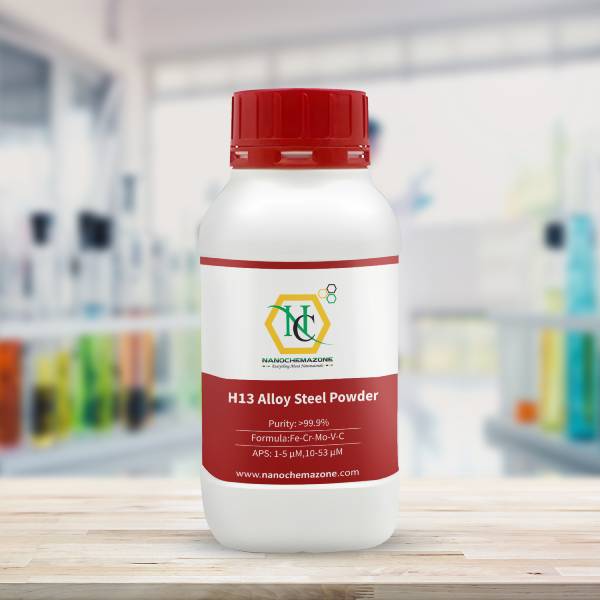
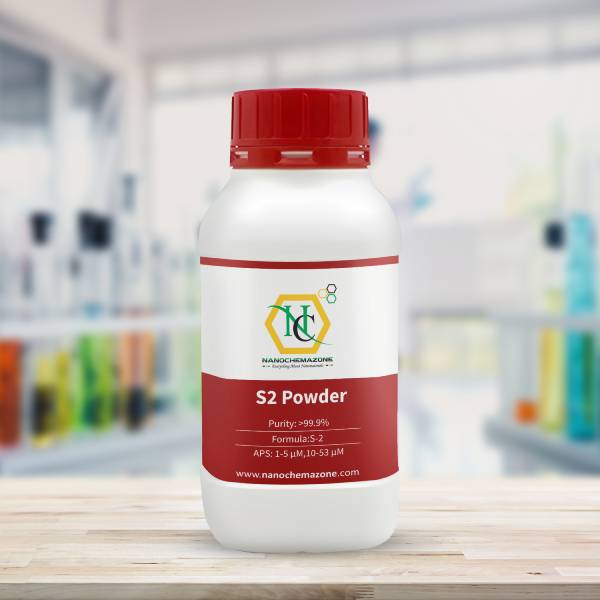
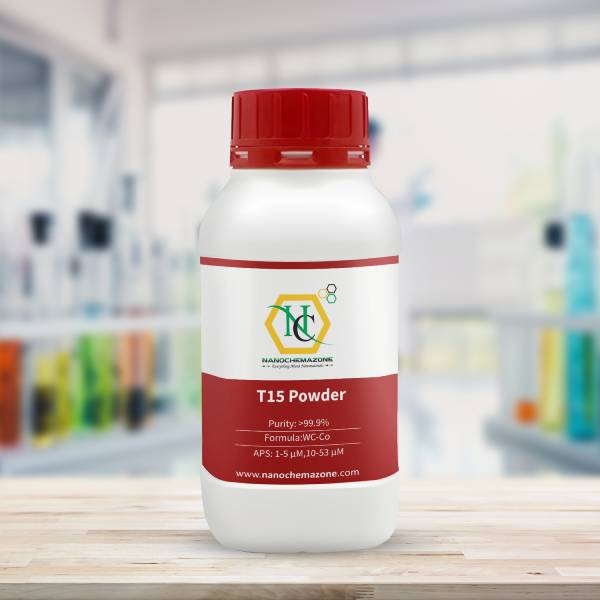
Reviews
There are no reviews yet.